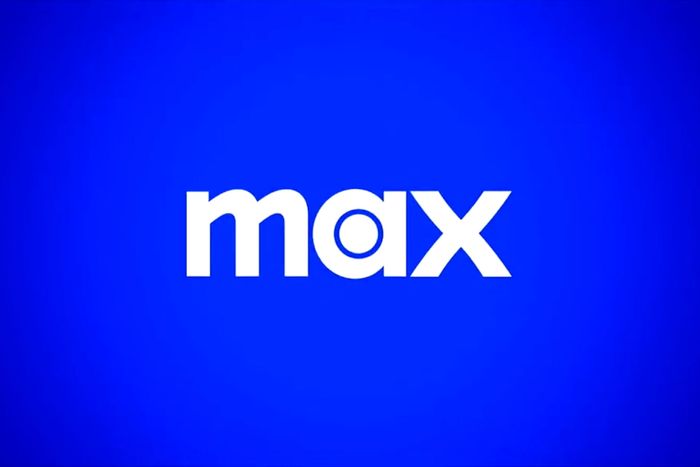
This week, Warner Bros. Discovery kicked off a 10-week campaign to sell consumers on its new streaming service Max — which is really its old service, HBO Max, but with a lot more stuff on it. Finally unveiled last week after nearly a year of planning and speculation, Max launches May 23 and will combine the contents of HBO Max and Discovery+ into a super-app, a bet that the company’s execs are undoubtedly praying will pay off.
“For me, one of the KPIs is what I call this probability game of, when you log into your Roku or Fire TV and see the sea of apps, that there’s a higher probability that you’ll choose Max,” says Pato Spagnoletto, Warner Bros. Discovery’s chief marketing officer, as he explains the service’s new slogan “the one to watch.” “The intent is to create a connection with you, the audience, not necessarily in a slapstick way or in an ultra-serious way, but just in a way that gets you, in a way that is relatable,” Spagnoletto said.
For the fledgling Max’s success, creating that connection feels like an existential challenge — the company’s stock dipped a bit after Max was unveiled — but it isn’t a unique one. Spagnoletto caught up with us to talk about the decisions that went into the campaign to rebrand HBO Max and how the company hopes to stand out in a field of streaming services, some of which also happen to be the same color as Max.
Let’s start with the name. Your colleagues spoke about some of the thinking behind it last week. What discussions, arguments, different thinking flew around while you were trying to decide whether to call it Max. Were there any fun rejected candidates that lost out?
It was a highly considered and high-judgment decision. We went through what you probably imagine to be the full array of everything from: Do you change the name at all? Do you go to something that is completely different? You know where we netted out, without calling out any of the names that were completely different. We quickly realized that we didn’t need it to go that far out, but we wanted to continue to lean on as much of the equity that we had built, but give ourselves room to change and signal change, which is where we ended up with Max.
But for sure, when you’re messing around with a name like HBO Max or HBO in it, you can imagine there’s a lot of emotions and a lot of sensitivities. I will say this, that it was always around what is best for the long term of the business and never about personal what do you like versus what do you like. It was long and arduous, but I think we came out with the right end product, hopefully.
I also wanted to ask about the color blue. Your design rationale states that, “it’s a popular color that resonates across genders and age groups.” It strikes me — and people have called this out already — that your competition would probably agree: Amazon Prime, Paramount+, Disney+, they all use blue. Max now uses blue.
Look, I think the name and the color, everything is what you make of it. While, yes, there are other services that are in the blue family, and of course we knew that going into this decision, we thought and believed: One, there’s a reason they’re all blue and it’s because of the consumer psychology behind it and how consumers react to the color. But two, when you look at them and more importantly when you look at Max, just in position to the other ones, it’s a very distinct color, it’s a distinct design. Paramount and Prime are a little bit on the lighter side, Disney+ has more of a gradient. But Max has a little bit more of a dark richness into the blue, which was deliberate — intending to signal not just change from HBO Max of the purple, but a much more sustainable premium version of the service. We think the color that we came up with resonates that.
We’ve talked before and you’ve mentioned that streaming services can be a little bit like selling insurance. That a lot of different streaming services haven’t quite figured out how to differentiate their product from everyone else’s. Everybody knows insurance brands. GEICO has a gecko, the “15 Minutes” slogan. Knowing that, how did you land on “the one to watch” as Max’s slogan?
There’s three criteria that we look at to make sure that these things work. One, is it unique? Two, is it relevant? And three, does it matter? When we thought about the campaign, the brand, and ultimately even the tagline of “the one to watch,” the answer was a convincing yes. The beauty about “the one to watch” is that it works in multiple dimensions. It can be very functional, like “the one to watch on a Sunday night,” but it can also be “the one to watch when you’re feeling inspired,” it can play at different levels. Our job is to own something in a way that’s more than just functional, but has an emotional connection. “The one to watch” gives us a ton of runway to play with that line. You’ll see it in the campaigns starting this week, without a home, where we play with it with mood states, we play with it with days of the week, we play with it with specific content.
There’s a challenge of marketing a new product. Then there’s also the challenge of marketing the programming. Recent HBO hits like The Last of Us and Succession probably benefited from how closely associated the service and the content were in the name and everything like that. Do you worry you’re throwing out the baby with the bath water by removing HBO from the name? Is that something you talked about?
It is, and I don’t worry about it because we thought about it and we planned for it, to be really direct with you. I don’t need to reiterate why HBO’s not in the name, part of it is obviously to preserve the brand equity that is in it. But the perfect answer that I can give you is actually in actuality in the next 10 weeks, we will continue to have title-specific marketing for the upcoming titles that we have, whether it be Love & Death, or The Idol, or even And Just Like That.. — oh, And Just Like That… is a Max title, sorry.
But for the other ones that are HBO, we’re going to be very clear that those are HBO originals that can be found on Max. Creatively speaking, it’s actually not that hard to do at all. That’s where we can have the best of both worlds. By the way, in the actual product experience, we will be very clear about what and where the HBO content lives so that people who are seeking it can find it easily and people who are not can discover it through their own personal experience.
Years ago, HBO Go infamously lagged during Game of Thrones. Then there was confusion between HBO Now vs. HBO Go, and which was which. Then came HBO Max, now being replaced by Max three years later. What if Max.com breaks on day one?
One of the reasons it took us — whatever it is — 10 months to launch this product is we wanted to make sure that we have a platform that scales and that works. The product team and the engineering team, I think have taken the best of both worlds and then added on top of it. Think about The Last of Us, The White Lotus, Succession. These are all titles that had record-breaking viewership, The Last of Us being really the biggest numbers. Thankfully you did not hear anything about anything breaking because of the investments that have been made on the platform, and those are the same investments that will carry over to Max.
We’re very lucky to be able to have a first impression for the second time and that we get to build off of some of the great work that was done by the independent services. For me, success, the next 10 to 12 weeks is not obviously just a successful launch of the service, but more importantly starting to build foundations with consumers from a brand perspective.
If people know and like what the brand stands for, it makes our lives easier to not only acquire but to retain subscribers. We have our work cut out, don’t get me wrong, but I feel very fortunate with the cards that we have in our hands to get it done. Let’s see. Maybe we’ll talk in 10 or 12 weeks, and we’ll be high-fiving or I’ll be telling you of other things that we learned that we need to fine tune.


